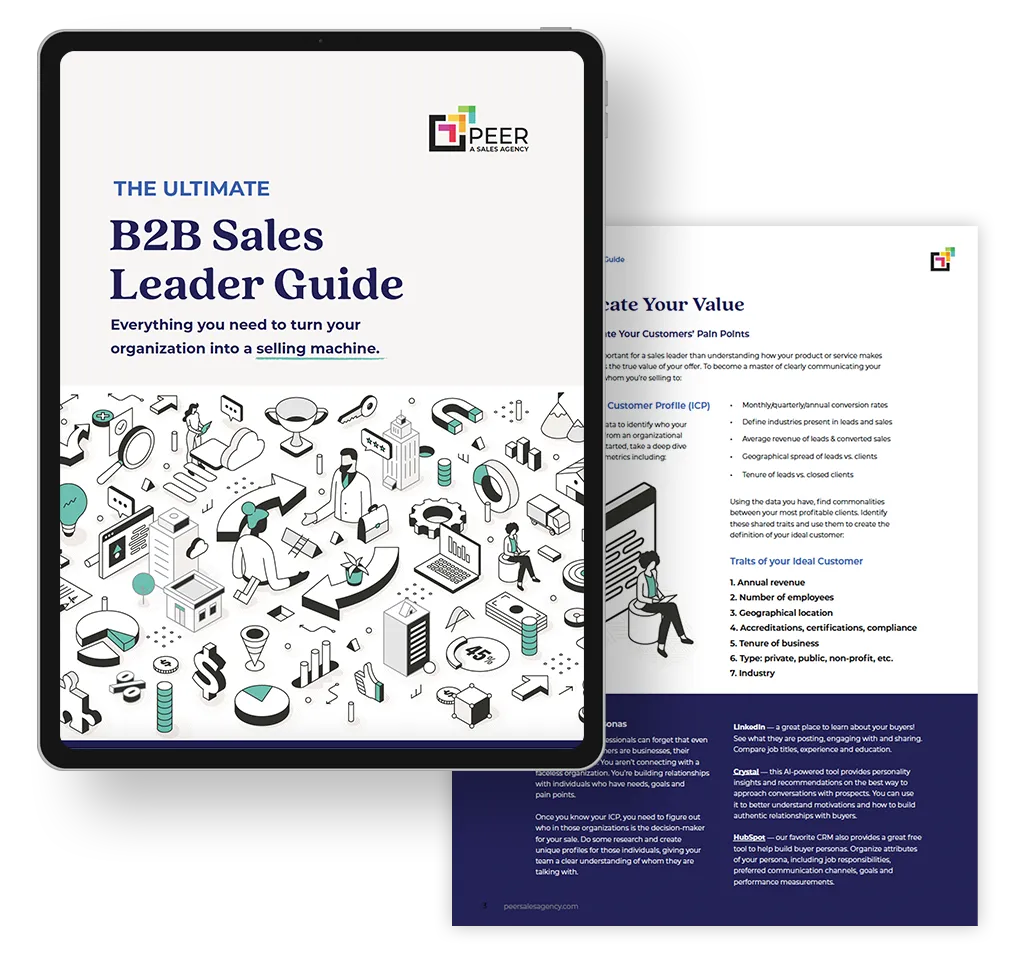When you think “marketing strategy” do you immediately think of ad spend? In reality, your entire marketing strategy comprises much more than just digital advertising. Your budget & strategy should include every activity and cost associated with the promotion and reach of your business, from software licenses to staff salaries.
Your marketing budget should include:
- CRM software
- Staff salaries and benefits
- Conferences and trade show attendance
- Sales enablement assets
- Marketing materials and collateral
- Public relations and media outreach
- Website maintenance and development
- Marketing research and analytics
- Agency, freelance, and consultant costs
- Promotional events and sponsorships
And don’t forget those miscellaneous expenses: allocate a portion of your budget for unforeseen expenses, contingencies, or small marketing initiatives that may arise during the year.
Dive Deeper: How Much Should Your Business Spend on Marketing? 3 Expert Models
Planning a marketing budget and executing your campaigns is much easier with an excellent strategic approach. Here’s how to define your budget, choose your campaigns & focus areas, and create a roadmap that gets the right things done at the right time:
How to Define & Decide on Your Marketing Budget
Defining and deciding on an annual marketing budget helps you set some guardrails and keeps your marketing efforts focused on creating sales results and boosting your revenue. The primary job of your marketing is to feed the sales team with new leads, help them nurture those leads through the funnel, and enable them to close more deals faster.
Step One: Know Your Target Audience & How They Buy
Before you can design a marketing plan, you need to know who you’re targeting and how they buy. Defining your ideal customer profile and buyer persona is crucial. It allows you to understand your target audience and tailor your products or services to their needs. Once you know the who, you can move on to the how and map out their buying journey.
1. Define Your Ideal Customer Profile:
Common filters used to define your ICP include:
- Annual revenue
- Number of employees
- Geographical location
- Legal specifications (accreditations, certifications, compliance-based specs)
- Tenure of business
- Company type (private, public, non-profit, etc.)
Analyze your existing data to determine the commonalities in deals that are closing versus those not closing. Apply these filters to the prospecting process and the meetings you are pursuing become far more likely to close.
Dive deeper: Get our step-by-step guide to creating your ICP.
2. Create Your Buyer Persona:
A buyer persona is like a detailed character sketch of your prospective customers. It’s a semi-fictional representation of a great customer, combining the key traits, preferences, and behaviors of your current customers and ideal buyers.
Having a well-defined customer persona allows you to tailor your sales approach and messaging to resonate with these specific individuals. It’s like having a personalized playbook that guides you on how to engage and ultimately, close deals more effectively.
Compile all the information gathered while researching your ICP, and reuse it to craft a detailed profile of your ideal customer within that ICP company. What job title do they have? What is their role in the purchase process?
More tips to create a persona:
– Give your persona a name and a face to make it more relatable.
– Include information about their age, occupation, hobbies, and goals.
– Understand their buying preferences and motivations.
– Consider their objections or concerns that may hinder their decision-making process.
GUIDE: How to Create B2B Buyer Personas
3. Map out The Buyer’s Journey:
– Determine the stages your target audience goes through when making a purchase decision: awareness, consideration, and decision. Include detailed information about what the buyer is feeling, thinking, and doing at each stage.
Determine the various touchpoints where your target audience interacts with your brand. These could include social media, email newsletters, websites, or physical store visits.
– Tailor your messaging and content to address their needs at each stage.
Knowing your target audience and how they buy allows you to tailor your marketing efforts to effectively reach and engage them. This understanding allows you to create a seamless buyer journey that meets their needs and drives conversions.
Drill Down: Increase Conversions with a B2B Buyer Journey Map
Review Your Sales Organization and Needs
All the marketing activity in the world won’t matter unless it’s aligned with what the sales team needs. Sales and marketing alignment is essential if you want to grow revenue, speed up the sales cycle, and see measurable ROI from marketing.
Open lines of communication between the sales and marketing teams are vital. Regular meetings and discussions should be held to understand the sales team’s needs and challenges. Before creating your next marketing budget, sit down with your sales leaders and ask a few probing questions to see how marketing can support them. For example:
– What objections does the sales team hear repeatedly?
– Where are prospects getting stuck in the funnel?
– What assets or materials helped you close your last ten deals?
– Where did your best leads come from in the last few months?
– Do you have any conferences, trade shows, or networking events coming up for the sales team?
– What are your sales goals, and what materials can marketing produce to help you?
Look into your sales data to identify trends, customer preferences, and areas where the sales team might need additional support. For example, if your leads are getting stuck in the middle of the funnel, you probably need more marketing touches and decision-driving enablement like case studies, testimonials, and email nurture campaigns loaded with objection-busting content.
Whatever the need, align your marketing efforts to address the specific areas identified by your sales team to drive better results.
Choose the Right Marketing Channels & Activities
Now that you understand what the sales team needs, it’s time to choose the right channels and tools to accomplish those goals. While not a comprehensive list of channels and activities, here are the top six channels and what they’re best for:
Your Website & and Integrated CRM
A sales-optimized website and an integrated CRM like Hubspot are the foundation for the rest of your marketing activities. You need to capture interest, create leads, and provide educational and decision-making content. You also need insights into all the ways your site does those things and analytic data to help you drive more quality conversations.
Website & CRM integration isn’t an either/or option for sales-focused marketing. You need both:
1. Lead Capture: A sales-optimized website enables you to capture potential customers’ information through forms, newsletter sign-ups, or chatbots. This data is automatically synced with your CRM, ensuring no lead falls through the cracks.
2. Lead Nurturing: With an integrated CRM, you can nurture leads effectively and automate personalized follow-up emails or targeted content based on their interactions with your website. This helps build trust and move prospects closer to making a purchase.
3. Sales Enablement: An integrated CRM provides your sales team with valuable insights into leads’ behavior and preferences. It allows them to track website visits, interactions with emails, and previous conversations, empowering them to have more informed and tailored conversations with prospects.
4. Streamlined Processes: By having a website and CRM work in tandem, you eliminate the need for manual data entry and streamline your sales process. Leads are automatically captured, assigned to the right salesperson, and tracked throughout the sales pipeline, saving time and improving efficiency.
5. Data-driven Decision Making: A sales-optimized website and integrated CRM provide you with valuable data and metrics to analyze your sales and marketing efforts. This enables you to identify what’s working, make informed adjustments, and optimize your strategies to drive better results.
It’s a winning combination that can significantly boost your sales and revenue.
Social Media
In addition to paid social, which we’ll talk about in a little while, organic social media for your business has big benefits. Active participation on social media platforms allows B2B businesses to showcase their expertise and establish credibility within their industry. By sharing valuable content, thought leadership articles, and industry insights, businesses can build a strong reputation and position themselves as reliable and trusted sources.
Maintaining a consistent presence across social media channels increases brand visibility, ensuring that businesses stay on top of their target audience’s minds. By regularly posting relevant and engaging content, businesses can reinforce their brand message and foster brand recognition.
Search algorithms like Google’s also scrape social sites for new content more frequently than other places around the web. Posting to social media frequently can drive up your appearance in search results, helping you own your brand name and keep potential prospects from ending up on a competitor’s website.
Social media also opens doors to meaningful connections with potential clients, industry peers, and thought leaders. Engaging with these individuals through comments, likes, and shares can lead to collaborations, partnerships, and referral opportunities.
Trade Shows & Conferences
After the pandemic, trade shows and conferences have come roaring back. These events have become increasingly popular avenues for generating new leads in industries where a personal touch is more aligned with the buyer’s journey.
These events bring professionals and potential customers together, providing a great opportunity to showcase products and services, establish your brand presence, and form valuable connections.
Don’t forget to keep your differentiators front and center in all your event marketing! Arm your sales team with the necessary assets to make a lasting impression. Banners, table setups, sales slicks, and product guides can effectively communicate your brand message and capture the attention of attendees. These assets serve as tangible reminders long after the event has ended, ensuring that your business stays top-of-mind.
Marketing’s job doesn’t end at the show doors, though. The follow-up process after a trade show or conference is equally important. To maintain the momentum and convert those new leads into customers, sales teams need well-crafted email sequences and outreach templates customized for trade show attendees. These resources streamline the follow-up process, enabling efficient communication and personalized interactions with potential clients.
By providing your sales team with the right assets and follow-up tools, you can maximize the return on investment from these events and establish meaningful connections that can impact your bottom line.
Content Marketing
Content marketing is a vital component of any successful marketing strategy and should be included in all marketing budgets.
- 71% of B2B buyers consume blog content during their buyer journey.
- A blog increases your chances of ranking higher in search by 434%.
- 61% of Americans spend 3X more time-consuming blog content than emails.
The fact is, people want to do their own research, make up their own minds, and then reach out to sales once they’ve identified their top solutions – and not a minute before. By sharing valuable and insightful information, businesses can build trust and credibility with their audience. Your content should address the audience’s pain points and offer solutions, comparisons, and detailed guides.
Valuable and well-optimized content is also more likely to rank higher in search engine results, driving more organic traffic to a business’s website.
Email Marketing
93% of B2B marketers use email marketing. So, if you’re not in your prospects’ inbox… chances are good that your competition is. Email marketing is the perfect avenue to stay in touch with your audience and provide them with valuable content that helps them solve their problems.
Email marketing allows you to foster trust and develop meaningful relationships with your leads. By consistently delivering helpful and relevant content, you establish yourself as an expert and demonstrate your commitment to their success. You can build these relationships up through a blog subscription email, a newsletter, or a dedicated lead nurturing campaign.
Of course, your emails should drive website traffic. Including links to relevant blog posts, landing pages, and product pages in your emails can drive traffic back to your website. By providing enticing snippets and compelling calls to action, you can encourage leads to explore your website further and ultimately convert into customers.
Don’t forget special offer campaigns! If you have a list of warm sales-qualified leads, you can gently nudge those leads towards making a purchase with a financial offer or another enticing bottom-of-funnel strategy.
Paid Digital Advertising
Paid digital advertising can be a powerful tool for businesses whose persona makes buying decisions online. By utilizing search engine marketing, paid social media ads, and display network advertising, companies can effectively drive traffic to their websites and increase their online presence.
One of the major advantages of paid digital advertising is its ability to target specific audiences to build a list of marketing-qualified, top-of-funnel leads. With search engine marketing, like Google Ads, businesses can create ads that show up when users search for relevant keywords and phrases, ensuring that their message reaches their desired customer base. This marketing channel can be pricy, with some industry titans spending $250K per month on these ads alone.
Paid social media ads can be more affordable and still allow companies to target specific lists of prospects or target by job title, demographics, geographical location, and interests. These ads can motivate previously unknown prospects to convert on your website, and you should have some email marketing infrastructure in place to automate a follow-up campaign to these conversions.
Display network advertising further expands your reach and brand awareness by placing ads on a network of websites, reaching potential customers wherever they browse the internet. Display ads are, generally speaking, not good conversion tools. Instead, these ads help keep your brand name at the top of mind for your prospects as they move through their research. These ads are often very affordable and help you build brand awareness.
Whatever channel you choose, your ads should drive traffic to a sales-optimized website or a highly optimized special offer landing page. By capturing contact information through these pages, businesses can then nurture these leads and guide them further down the sales funnel.
Create a Strategic Marketing Roadmap
Now that you know what you need to create and achieve with your marketing efforts, it’s time to prioritize and plan by creating a strategic marketing roadmap. This roadmap serves as a guide, outlining the steps, projects, and milestones necessary to achieve marketing goals and objectives. In essence, your marketing goals and roadmap can be broken down into deliverables, deadlines, and deployment plans.
Deliverables
Deliverables are the assets that are required for the successful execution of each campaign. To ensure clarity and efficiency, it’s important to list these deliverables systematically. Here is a step-by-step guide on how to create a comprehensive deliverables list for your campaigns:
Start by thoroughly understanding the goals and objectives of your campaign. This will help you identify the specific deliverables needed to achieve those goals.
Divide your campaign into different elements such as social media, content creation, advertising, email marketing, etc. This breakdown will help you categorize the deliverables required for each component.
For each campaign element, identify the assets that are essential for its success. These assets could include social media graphics, blog posts, ad copy, email templates, etc. Determine the priority of each asset based on how long it will take to produce, when it will be needed in the campaign, and when the campaign launches.
Deadlines
To ensure all those deliverables are ready to go by the time you need to launch a campaign or attend an event, you’ll need to keep your deadlines in mind.
With your list of required deliverables in hand, work backward from your launch date or event. If your event is on April 15th, and your campaign assets will take six weeks to build, you should have all the asset creation roadmapped for January & February execution. This gives you time to build, edit, and get approval for all your campaign components, with a built-in buffer to give you more breathing room if a delay pops up.
Identify the most critical tasks and the tasks that have the longest turnaround time, and prioritize them on your roadmap accordingly. Delegate responsibilities to team members who are best suited for each task, and make sure everyone is aware of their individual deadlines.
Develop a visual timeline that shows all the tasks, their deadlines, and dependencies. This will help you track progress and ensure everything is on schedule.
Try to work ahead by at least a month. A full quarter, when possible, is even safer.
Deployment
Now that you’ve got your deliverables in hand and you’ve met your deadlines, it’s time to make sure the various assets get deployed to the right stakeholders, programs, vendors, and teams.
Determine who’s responsible for using, posting, or otherwise deploying each deliverable. If it’s a sales deck, make sure your sales team knows where to find it and how or when to use it. Make sure they understand why it’s been created and what it will help them do.
For content-based deliverables like social posts, articles and blogs, and website or landing pages, make sure these pieces are published or scheduled through your website’s content management system or social scheduling tools, like Hubspot’s Marketing Hub or Content Hub.
For email campaigns, make sure the emails and any associated automation are set up and scheduled correctly. Ensure that the sales team is aware of these campaign emails and that they understand how and when to follow up with prospects who engage.
Regardless of what you’ve produced, make sure that it gets deployed and that the owner of that deployment understands exactly how it was intended to be used.
Strategic Marketing for Sales Results
At the end of the day, your marketing materials and activities should fill the gaps in your sales processes, win more business, and increase your revenue. This can be a tall order for small businesses and medium-sized businesses with small teams. You may be considering bringing on a freelancer, hiring an agency, or hiring an in-house resource to help you get the job done. But is outsourced marketing the right move for your business, or should you hire internally? Weigh the pros & cons of both solutions here.



